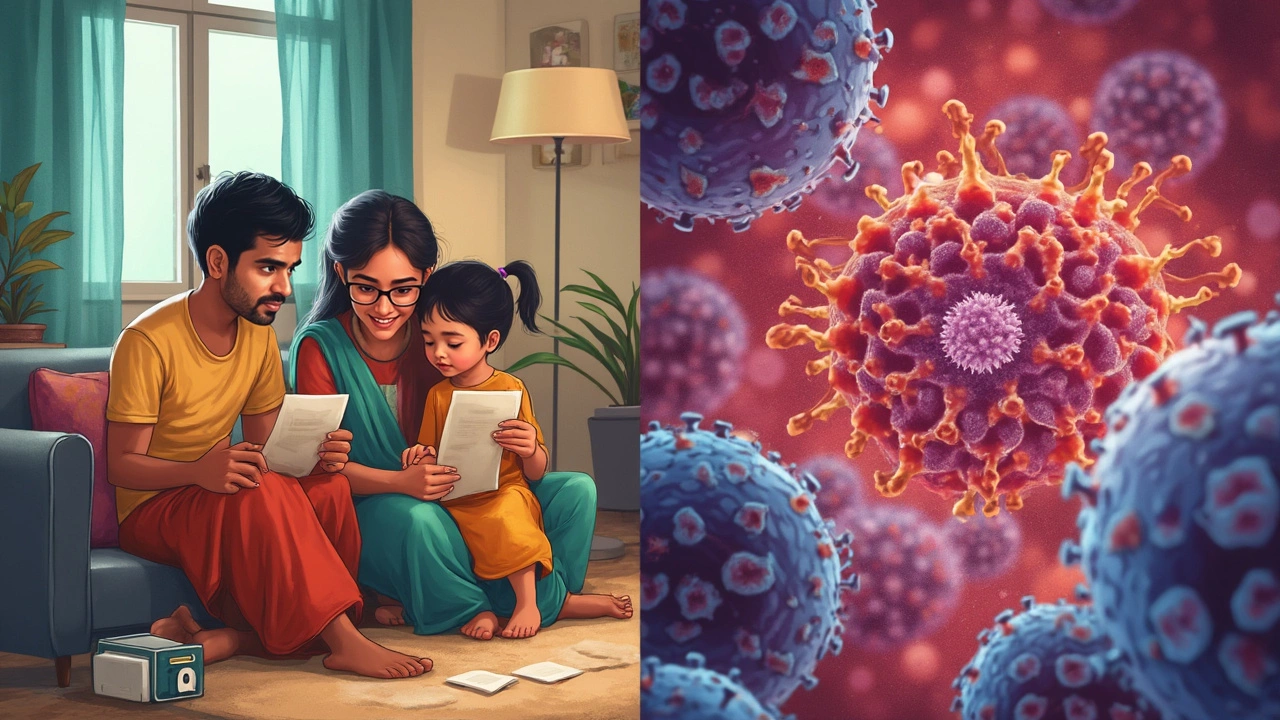Some cancers seem dead set on staying one step ahead of doctors. They don’t show up early. They hide in places tough to reach. Even when found, they don’t respond well to chemo, radiation, or surgery. That’s what makes cancers like pancreatic cancer, glioblastoma (a deadly brain tumor), and a few others so notoriously hard to treat.
Ask any cancer expert—they’ll tell you there isn’t just one “hardest cancer.” But if you check survival rates and how treatments work, a seriously tough handful stand out from the crowd. Knowing which cancers throw up these roadblocks can help you understand what patients and families are really up against, and why research is being pushed so hard in these areas.
If you (or someone you care about) are staring down one of these types, you’ll want straight answers. The kind of info that helps you make sense of the odds, spot helpful clinical trials fast, and get the support needed without wading through medical jargon. Stick around, and you’ll get exactly that.
- Why Some Cancers are Harder to Beat
- Cancers with the Toughest Reputations
- What Makes These Cancers So Resistant?
- Tips for Patients and Families Facing High-Risk Cancers
Why Some Cancers are Harder to Beat
Not all cancers act the same. The reason a few are labeled the hardest cancer to treat comes down to how sneaky and stubborn they are. Some cancers, like pancreatic cancer or certain brain tumors, grow in places that are tough for surgeons to reach. Others don’t show symptoms until they’re pretty far along, which makes early treatment much harder.
The biggest headaches for doctors come from things like:
- Lack of early warning signs: Pancreatic cancer is notorious for popping up with vague symptoms or none at all until it’s already serious.
- Tricky location: The pancreas and brain are surrounded by important tissues and nerves. Operating isn’t easy without risking damage elsewhere.
- Fast, aggressive growth: Some cancers double in size before you even notice. For example, small cell lung cancer spreads quickly and often before it’s caught.
- Chemoresistance: Cancers like glioblastoma don’t respond well to standard treatments because their cells figure out ways to survive.
- Hiding from the immune system: These cancers are good at dodging the body’s natural defenses.
Here’s a quick comparison of five tough-to-treat cancers and their five-year survival rates:
| Cancer Type | 5-Year Survival Rate |
|---|---|
| Pancreatic | around 12% |
| Glioblastoma | less than 7% |
| Liver | about 21% |
| Esophageal | about 21% |
| Lung (small cell) | about 7% |
When you look at those numbers, it’s clear why these diseases are feared. They don’t play fair, which means both patients and doctors need extra persistence and quick decision-making. Figuring out the roadblocks is the first step toward outwitting them.
Cancers with the Toughest Reputations
When it comes to the hardest cancer to treat, a few names always hit the top of the list. These cancers are known for being relentless, sneaky, and just plain stubborn against treatment. Let’s look at which ones stand out and why doctors lose sleep over them.
- Pancreatic Cancer: This one’s infamous. Most people won’t notice any symptoms until it’s reached an advanced stage, which means treatment is already behind from the start. Surgery isn’t always possible because of its location. Five-year survival rates stick around 10% in the US, which tells you how tough it is to beat.
- Glioblastoma: This aggressive brain tumor is the definition of a challenge. Even with surgery, radiation, and chemo, it almost always comes back. Median survival is about 15 months after diagnosis, and long-term survivors are rare.
- Lung Cancer (Small Cell): Smoking is a big reason people get this type, but it spreads fast and doesn’t usually get caught early. For small cell lung cancer, less than 7% of folks make it five years past diagnosis.
- Liver Cancer: The tricky thing here is the liver handles so much blood—cancer cells can travel to other body parts quickly. Many people also have liver problems to begin with, which limits treatment options.
- Esophageal Cancer: You might not notice it until swallowing gets hard, at which point it’s often spread further than doctors would like. Survival rates are still quite low compared to most other cancers.
If you’re wondering how they stack up, here’s a quick look at survival rates from the American Cancer Society, based on people diagnosed between 2013–2019:
| Cancer Type | 5-Year Survival Rate |
|---|---|
| Pancreatic | 11% |
| Glioblastoma | 7% |
| Small Cell Lung | 7% |
| Liver | 21% |
| Esophageal | 21% |
These numbers are rough, but they show why some cancers make doctors and patients anxious. Many advances are happening, from targeted drugs to immunotherapies, but beating these cancers still means running a marathon, not a sprint.

What Makes These Cancers So Resistant?
It almost feels unfair how tough some cancers are. But there are real, solid reasons behind this. When it comes to hardest cancer types like pancreatic cancer and glioblastoma, a few stubborn problems show up over and over.
First, these cancers usually don't give any signs until it's late. By the time symptoms appear, the cancer has often spread or grown so much that treatment isn’t as effective. For example, more than 80% of people with pancreatic cancer are diagnosed after it has already spread.
Second, their location is a huge issue. Pancreatic tumors hide deep inside the body, surrounded by other organs, making surgery tricky. Glioblastoma grows right in the brain and can weave itself into healthy tissue, so doctors can’t just cut it all out without hurting key brain functions.
Cancer cells can also trick the immune system. Instead of getting attacked, some tumors put up a defensive wall, almost like masking themselves. Plus, the blood supply in these tumors might be bad, so chemotherapy meds don't reach all the cancer cells.
“Pancreatic cancer, for instance, is wrapped in dense tissue that blocks both therapies and immune cells, making it particularly challenging to treat,” says Dr. Stephen Goff, a leading cancer researcher at Columbia University.
To paint a clearer picture, here’s what makes these cancer treatment obstacles so tough for doctors and patients:
- Late diagnosis: Hard-to-detect symptoms let the cancer grow unchecked.
- Location: Deep inside the body or in the brain, surgery gets risky or incomplete.
- Cell tricks: Tumors use tactics to hide from treatments and the immune system.
- Drug resistance: Some cancer cells simply stop responding to treatment, forcing doctors to try new approaches.
- Poor blood supply: Chemo struggles to reach every part of the tumor.
Check out these raw numbers to see how this plays out:
| Cancer Type | 5-Year Survival Rate | Common Stage at Diagnosis |
|---|---|---|
| Pancreatic Cancer | ~11% | Advanced/Metastatic |
| Glioblastoma | ~7% | Advanced |
All of these reasons show why the hardest cancer cases push doctors to look for new therapies every day. Research is always happening, but these cancers don’t give up their secrets easily.
Tips for Patients and Families Facing High-Risk Cancers
Getting hit with a diagnosis like pancreatic cancer or glioblastoma turns your world upside down. Nobody’s ever prepared for the medical insanity, emotional whiplash, or how fast decisions start piling up. But you can take a few steps to steady yourself and help loved ones work through it.
- Push for the Right Team: High-risk cancers need more than just a good doctor—they need a team who’s battled these types before. Ask hospitals outright if they have experience with your diagnosis. Multi-specialty cancer centers often have better chances and access to the latest treatments.
- Look Into Clinical Trials: For stubborn cancers, clinical trials can offer new hope. The good ones come with real science behind them, and they often mean you get treatments not widely available. Sites like clinicaltrials.gov are worth checking regularly.
- Don’t Forget About Palliative Care: This isn’t only for end of life. Teams like this help with pain, feeding issues, stress, and tough decisions. Patients with early palliative care sometimes report a better quality of life—and, surprisingly, some actually live longer.
- Stay Organized: Keep notes of every scan, appointment, and result. Bring someone to appointments to help remember what gets said. The details stack up fast with hardest cancer cases.
- Ask About Genetic Testing: Some tough cancers open up new treatment options if you have certain gene mutations. For example, about 10% of people with pancreatic cancer have inherited mutations that might lead to better-targeted drugs.
Quick stat check: making it simple, here’s a peek at 5-year survival rates for some of the toughest cancers, just to show why all these steps matter so much.
| Cancer Type | 5-Year Survival Rate |
|---|---|
| Pancreatic Cancer | 12% |
| Glioblastoma | 7% |
| Lung Cancer (small cell) | 7% |
| Liver Cancer | 21% |
Numbers don’t tell the full story, but they highlight why finding every edge matters with these cancer treatment battles. Support groups—whether in-person or online—can help you process the emotional side and connect with others who get what you’re going through.
One last thing: take breaks, delegate tasks, and remember you don’t have to know everything at once. High-risk doesn’t mean impossible. Getting the right info and support early helps you push back—hard.
